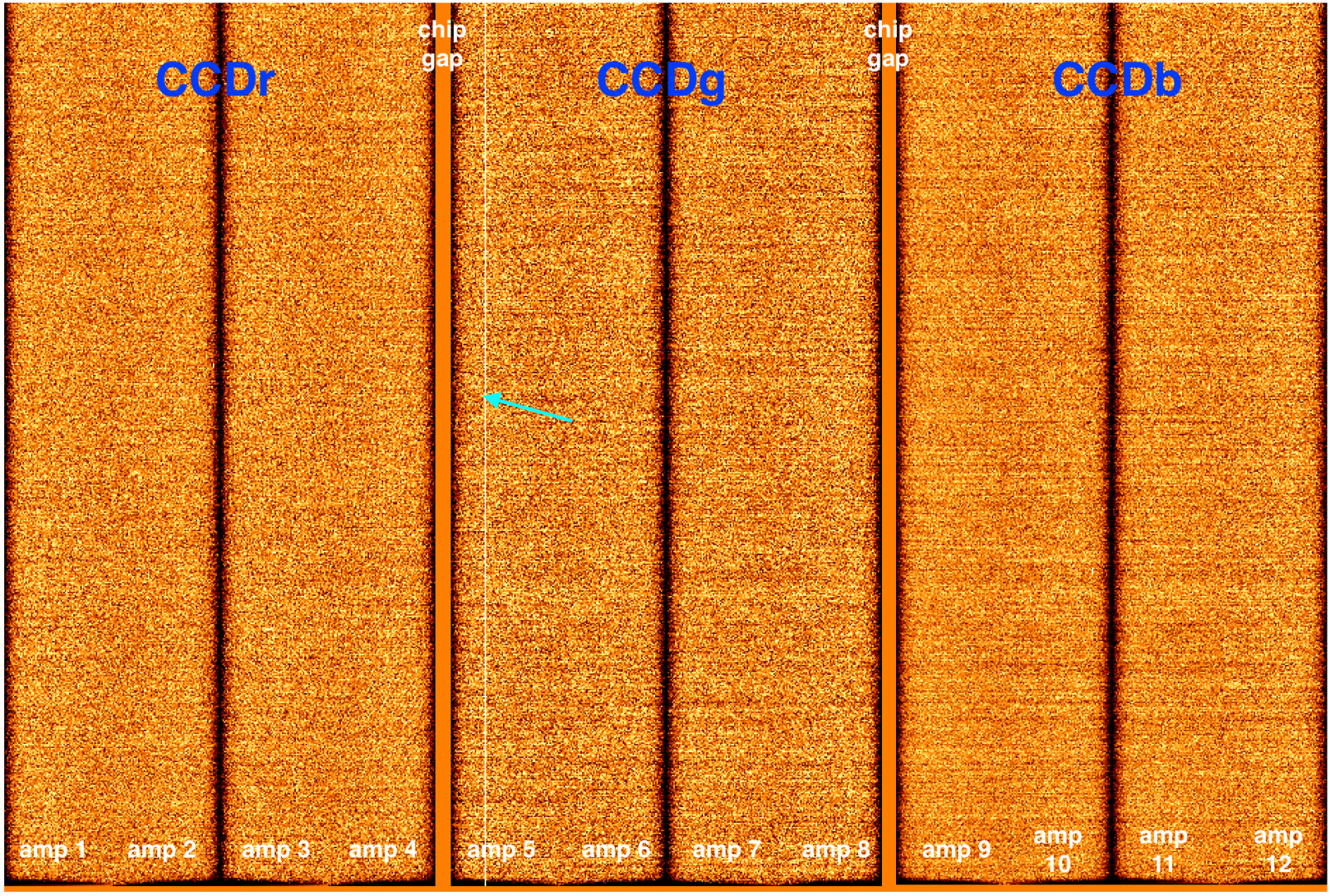GMOS-S CCD2 issues
The repair attempted during July was not successful, and the problem on CCD2 (amplifier #5) persists. On the other hand, the noise patterns on CCD2 and CCD3 are gone.
The situation will remain like this during semester 22B since the only possible solution requires a major intervention, which is not planned for the current semester.
Webpage on GMOS-N detector status
A new webpage with information on the current status of the GMOS-N detector array is now available here. The webpage provides details on the recent hot column features (see March 10 announcement) and updated recommendations for dither strategies to minimize the impact of the hot columns on science data. Any future updates from the ongoing characterization of the hot columns will be posted on this webpage.
Update on the GMOS-S status: upcoming intervention
As of July 2022 the noise problem on CCD2 and CCD1 persists.
GMOS-N status update
The GMOS-N detector issue reported on March 2 has largely been resolved by the full thermal cycle performed between March 2 and 3. The extended bright columns on amplifiers 7 and 12 are no longer present. The narrow bad column of hot pixels on amplifier 5 persists and saturates in longer science exposures. The following figure shows the hot column in an overscan-subtracted bias image (as marked by the blue arrow).

New GMOS-N bias features
The GMOS-N detector has shown new bias features since an uncontrolled warm-up of the detector on February 26, 2022 . These features consist of a narrow bright column on amplifier 5, and broader bright columns on amplifiers 7 and 12. As a first measure to address this new issue, a full thermal cycle of the detector is being performed starting from today. GMOS will be unavailable for the next couple of nights until the thermal cycle is complete.
2022B Call for Proposals
Gemini is now accepting proposals for observing time in Semester 2022B. The submission deadline varies with participant. A new version of the Phase I Tool (PIT) has been released to support proposal submissions.
GMOS-S unavailable
GMOS-S is unavailable due to the re-appearance of the CTE problem on CCD1, plus high noise structure on CCD2. Troubleshooting started on Monday and is currently ongoing.
GMOS-S is back!
After a thermal cycle performed over the weekend, the detector amplifier #5 is back to its normal perfromance. CCD1 CTE is also nominal, and OIWFS performance is OK after the successful repair that had been performed during September. Therefore GMOS-S is back at full capacity.
GMOS-S update
GMOS was installed on the telescope, but it is not available yet due to the issue with CCD2 on the GMOS detector array, which features enhanced noise structure. The troubleshooting will be carried away during this week.
2022A Call for Proposals
Gemini is now accepting proposals for observing time in Semester 2022A. The submission deadline varies with participant. A new version of the Phase I Tool (PIT) has been released to support proposal submissions.